Author(s)
Marianne Shaneen
In “Immortals: On the Ancient Future Lives of Stone and Plastic,” Marianne Shaneen blends stories, histories, and ontologies of two substances: stone and plastic.
As quasi-immortal materials, stone and plastic bear witness to the catastrophic effects of extractive linearity, while also drastically exceeding human lifespans. The essay entangles these forms that oscillate between geological and synthetic realms, and are deeply embedded in industrial-capitalist development.
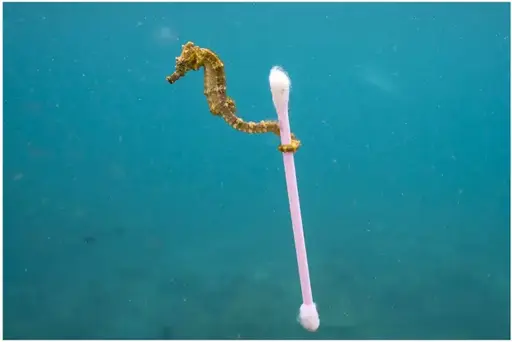
—Etel Adnan, Night 1
I.
The most futuristic imaginings are beholden to deep lithic time. Far from inert, minerality wildly traverses with unpredictable dynamism. The ubiquity of plastic characterizes the present, but its persistence carries into its non-biodegradable perpetuity the brutal exploitation—as well as the organic material from millions of years ago—that engendered it. In these ways, stone and plastic exist as quasi-immortal materials.
Minerality is dramatically entwined with biological existence: space rocks may have transported the first microbial life to Earth via panspermia. Single-celled organisms precipitated grains of magnetite with which they oriented themselves along Earth’s magnetic fields. Animal and mineral collaborated in biomineralization to produce shells, horns, beaks, teeth, and spines. Clovis stone projectile points were instrumental in the overhunting that contributed to the extinction of the Pleistocene mammoths and mastodons that contemporary conservationists want to reintroduce through rewilding.
For western and Arab medieval alchemists, the philosopher’s stone was the most desirable of substances, not just as the key to transmutation of matter, but as an elixir of immortality. Minerals can be seen as the primary substances of epochal transmutation—and also perhaps of eternal life, as proponents of digital immortality would have us believe. The magnetic compass was instrumental to European colonization, along with the mineral accoutrements of the alchemist John Dee, personal consultant to Queen Elizabeth I, who coined the term “the British Empire.” Through his prophetic crystal scrying stone and his obsidian mirror—originally plundered from the Aztecs—Dee claimed to receive transmissions from the spirit world, instructing him to establish a utopia in the “new world.” With the ear of the Queen, he deployed his knowledge of Euclidian geometry and optics to navigation, toward his imperialist vision.
Two hundred and fifty million years ago, an expanse of rock lay under the floor of the Permian Sea. Eventually, colliding tectonic plates pushed up the ancient seabed, which dried up into a desert littered with shark teeth. The body of stone emerged into its specific geographical fate near what was eventually called White Sands in New Mexico, and the ever-shifting shimmering dunes that can travel as much as 30 feet per year. El Camino Real de Tierra Adentro, the “King’s Road” from Mexico City to the pueblo of Ohkay Owingeh, extended across it. It was rutted by the wagon wheels of conquistador Juan de Oñate and his Spanish colonizers, looting silver and imposing European goods and culture, forced religious conversion, torture, military occupation, diseases, and enslavement upon the Pueblo peoples, despite their numerous uprisings. But long before the Spaniards came, this route was a complex aboriginal trade and communication network.
The colonizers annihilated fifty million Indigenous people, and in their sudden absence the millions of acres they’d cultivated rapidly returned to forest, absorbing so much carbon dioxide that the resulting Little Ice Ageits anthropogenic imprint in the stone’s stratigraphic record.
The worldviews of multifarious human cultures from prehistory through to the present, express beliefs in a sacred living Earth of interactive kinship and material vibrancy: of creaturely and material time coextensively unfolding in diurnal and nocturnal cyclical recurrence, seasonal rhythms, nomadic desert lunar time, solar and star time, moon and tide time. With industrialization this slow time became slow violence. Eurocentric mechanistic and reductionist ideologies, and chauvinist conceptions of human exceptionalism infused by Judeo-Christianity, were hegemonically imposed across the globe. The discipline of western geology was established from the imperative of mineral extraction, along with the dogma of the mineral realm as inert and without agency, as private property and a source of wealth to be “activated through the mastery of white men.” 2 In A Billion Black Anthropocenes or None (2018), geophilosopher Kathryn Yusoff asserts that at geology’s inception, this “transmutation of matter” established a “biopolitical category of the inhuman” that “[moved] across territory, relation, and flesh” in a parallel categorization of enslaved persons as property. 3
The ground, and everything made from its materials, echoes across time invisibly yet potently—with iron in the spilled blood, and sodium, potassium, and magnesium in the sweat—of the enslaved and incarcerated who mined the gold, silver, salt, copper, and coal. Deeper than the deepest-dwelling worms, or the clawing Nile crocodiles, or the domain of microbes, or the roots of the Kalahari Desert’s shepherd’s tree, humans have bored into the subterranean mineral world. If all the oil boreholes on the planet were connected they would reach from Earth to Mars. Preserved below ground, holes from drilling and mining will remain for tens of millions of years or longer, protected from the natural erosion that the human-made alterations above will eventually succumb to. Of everything that humans will leave behind, the most enduring may be the holes they’ve drilled.
A defining characteristic of industrialization is the mobility of unprecedented amounts of geologic material from its subterranean coextensive autonomy. As observed by media theorist Jussi Parikka, extracted minerals are used in turn to engender new modes of technological mobility and radical temporal transformation. 4 Industrial acceleration forced towns to relinquish their local clocks and adopt the synchronic western time of the railroad, and its iron tracks reverberating with “the afterlives of slavery in the chain gangs that laid [them].” 5
The iron in these tracks, and the explosion of mineral diversity that provided the material foundation for the industrial revolution, may have been formed by “trillions upon trillions of microbes breathing.” 6 Earth’s primordial atmosphere was virtually without oxygen, and the earliest organisms were anaerobic bacteria. One lineage evolved into cyanobacteria that began to live from solar energy through photosynthesis, exhaling oxygen as a waste product. The early oceans were filled with dissolved iron, which the new element of oxygen corroded and sent sinking to the bottom of the sea in massive deposits to become trillions of tons of iron ore.
In the mid-1880s, the railroad tracks that closely followed the El Camino Real de Tierra Adentro, led to the decline of travel along the original trail. As human activity across its surface dwindled, the mass of stone vibrated with the creaturely return of antelope, desert mule deer, coyotes, and rattlesnakes. This sonic environment of caws, yelps, and growls was eventually overwhelmed by the incessant roar of a more powerful beast, the great asphalt python of Interstate 25: a sound that resonated with the steely temporal transformation that Taylorism imposed upon labor and craft, before post-Fordism internalized this controlling discipline into working bodies.
The corpus of stone bordered the White Sands Missile Range, built in 1945. One fateful morning, after existing for billions of years in geological time, and after coexisting with modern humans for about two hundred thousand years, the expanse of stone was thrust into domination by human time, irradiated in the heat and white fury of the first nuclear detonation—the Trinity nuclear bomb test. Along with tons of rock and sand, the expanse of stone was thrust up into its infernal dome and liquefied, to cascade as a boiling rain over the desert, fusing with the sand into a ten-foot deep crater of glassy-green trinitite. While mineral temporality can express abrupt changes such as earthquakes and volcanic eruptions, at that moment, the stone—along with all human, animal, plant, and mineral existence—became overwhelmingly subjugated to the temporal influence of a small group of scientists, the United States Army, and its weapons producers. Its blast subjugated geological duration to human instantaneity.
For the alchemical metallurgists, metal possessed a dual materiality—as a divine substance of agricultural tools, and as a demonic material of weaponry. The artificial radioactivity from the Trinity test left a widespread and globally-synchronous mark in the mineral record. The fallout of nuclear testing cannot be relegated to the Cold War and its past; it lives on in the displacement and exposure of indigenous peoples and continually erupts in contemporary uranium mining and the environmental racism of its disposal.
Yucca Flats in Nevada is a compelling testament to these afterlives. This site has been designated as a permanent disposal repository for nuclear waste that will endure far longer than modern humans have existed; radioactive waste from nuclear plants could take up to one million years to decay. In 1981 the Human Interference Task Force created the field of nuclear semiotics and enlisted anthropologists, engineers, nuclear physicists, sci-fi writers, linguists, artists, and others, to devise a “keep out” warning sign that would remain communicable to generations far into the future. Texts in numerous languages, symbols, and physical deterrents, along with a “nuclear priesthood” to transmit a sense of dread around the site, and “ray cats” bred to change color when exposed to radiation, have been offered as solutions.
Extracted minerals exert agential power. Quartz and silicon form the material nexus of the tele-computational acceleration of time, and its yet-unknown impact on human consciousness. We are inundated with digital “microtemporalities”—electronic signals communicated at speeds that aren’t perceived by human senses. Mineral dynamism persists in the carbon-heavy cost of digital culture, and the “zombie media” of hundreds of millions of discarded electronic devices, as e-waste exuding its undead toxicity. 7
The stone-turned-trinitite originated from a firmament that swirled for fourteen billion years in its own celestial ecosystem. Minerals arriving to Earth on meteorites through cosmological agency were mined and launched back into the sky. Space was colonized with Sputnik, the first of an invasive species of human-made objects that now overrun low Earth orbit. Remnants of spent rocket bodies, deteriorating space stations, and GPS satellites equipped with atomic clocks that regulate human time to within three nanoseconds, now encircle their human creators with a ring of ballistic metallic garbage that mirrors the churning gyre of plastic in the ocean below.
Scanning the skies not for falling stars but for falling radioactive space trash, humans may have set artificial satellites into motion, but they orbit and collide in temporally unpredictable cosmic, geological, and biological feedback loops, like aerial metallic Frankenstein’s monsters, emancipated from what their creators intended for them. The power of material vitality to impale illusions of linear technological progress made itself known in 2002, when plummeting satellite debris struck a six-year-old boy in China who was playing under a persimmon tree.
II.
The sperm whale’s waxy elixir was extracted to produce candles that illuminated the wealthy and sometimes set them on fire. The North American colonists at the center of the eighteenth- and nineteenth-century global whaling industry used whale oil “to grease the gears of the Industrial Revolution.” 8 Its light penetrated the darkness, and workers labored through the night. It illuminated miners’ headlamps, and lubricated guns, watches, clocks, typewriters, the massive textile industries, trains, and precision machine parts. Hunted nearly to extinction, the whale was essentially saved by the discovery of oil.
The agency of planetary heat, pressure, and time reanimated dead organic material into the dark lifeblood of western petrocapitalism. In Cyclonopedia, by Iranian philosopher Reza Negarestani, technocapitalism is “contaminated by the sentience of oil,” parasitically implanting its chthonic animative force, accumulated over eons, into the human host. 9 The Great Acceleration of the 1950s, fueled by petroleum, gave birth to plastic, by which whales are again today existentially threatened—by plastic sheeting, shopping bags, snack wrappers, cups, gloves, netting, flip-flops, and water bottles that accumulate in their stomachs.
Plastic resplendently embodies an imperviousness that has always been out of reach for its human creators—who in time always prove permeable to decay and death. A materialized expression of the human yearning to escape biological limits, plastic will outlive its creators. Most plastic keeps its molecular form indefinitely, taking up to hundreds of thousands of years to break down into microparticles that may never disappear. Perhaps its consumers find plastic so addictive because it embodies their desire for immortality.
Plastic also fulfills the human wish for eternal life in another way—as the base for pre-digital cinematic images. Celluloid enables a transmutation of linear time in its seeming reanimation of the dead. Through the cyclical repetitions of its reels, it infuses its ageless ghosts with the luminous illusion of immortality. Film, however, cannot escape its synthetic mortality, or its materiality as “a thoroughly ecological process.” As ecophilosopher Adrian J. Ivakhiv observes, cinema depends on “solar energy: the capture of reflected solar light itself, and the indirect products of that energy that have been stored and compounded over millennia in the form of fossil fuels and their photochemical derivatives.” 10
In 1945 a sheet of polyethylene terephthalate, coated with silver halide emulsion in its Kodak packaging, was mysteriously fogged with black spots. Testing revealed the damage was caused by “a new type radioactive containment not hitherto encountered.” 11 The strawboard in its packaging was produced in a mill along Indiana’s Wabash River. A malignant windborne plume from the Trinity detonation two thousand miles away, irradiated the rain that fell into the river, contaminating it. This dynamic interaction between gamma rays, wind, rain, river water, straw, silver halide, and plastic occurred outside of human intentionality, performing a non-human photographic act.
When Kodak threatened to sue for damages to its film stock in 1951, the US government agreed to provide them with schedules and maps of future detonations so they could protect their product. In return, Kodak kept the knowledge of the nuclear testing a secret from the public unknowingly threatened by its carcinogenic radioactivity.
The indeterminate contingencies of radioactivity and its unrestrainable movement through space, time, material, and flesh, revealed themselves in a ghastly collaboration: after the nuclear tests in Bikini Atoll, fish cut in half and placed upon photographic plates produced haunting images of their radioactive bodies. These “radio-autographs” captured a concentrated moment of toxicity in its unpredictable nonlinear trajectory through multiple ecosystems. 12 Every nuclear event continues to discharge its power across temporal chasms. Indeed, as Yousoff—citing environmental humanities scholar Elizabeth DeLoughrey—recalls, “it is not just the environment that bears the trace of these ‘tests’; the body of every human on the planet now contains strontium90, a man-made byproduct of nuclear detonations.” 13 DeLoughrey additionally observes that “the irradiation of tissue continues after the body’s death.” 14
The plastic industry’s synthetic offspring infiltrates biological reproductive destiny. Toxic “forever chemicals” contaminate breast milk and placentas. Leaching into bloodstreams, they mimic estrogen, disrupting hormones and interfering with fertility. This fogged sheet of film, with its nuclear imprint, might embody the transition from biological to new forms of post-biological life. It might make its way into the ocean, and wear down into microplastics, dispersing into billions of tiny floating synthetic islands for microorganisms to attach to as stable harbors upon which to propagate. These novel, hard, durable surfaces in the open ocean where none had before existed, enduring far longer than biodegradable flotsam like wood, might allow these microorganisms to live longer and travel farther—as plastic lifeboats that could transport pathogens like cholera across vast distances. Together plastic and microorganisms might form a new synergistic ecosystem that evolves to thrive in a human-made plastic environment. Instead of contributing to ecocidal toxicity, the piece of film might contribute to the inception of new evolutionary pathways, to a new food chain of biosynthetically diverse life. It might contribute to the appearance of novel marine species in the plastic soup the seas will become: a species of fish might evolve to devour plastic, not as food, but as a substance that when digested is squeezed out from underneath its scales. This might cover the fish in a thick mucus that forms an insulating thermal barrier, allowing it to withstand rising ocean temperatures.
The piece of film could also face extinction, via bacteria that evolves or is bioengineered to metabolize plastic—indeed, cyanobacteria is currently being explored for this purpose. Some scientists warn, however, that releasing such bacteria into the environment could inadvertently destroy the ubiquitous plastic connective tissue of the manufactured world. Microbes could render into dust the technological mesh of polymers that entwine human activity, causing cars to blow up, nuclear submarines to fall apart, and power stations to rupture, in massive conflagrations as plastic gas lines meet with electrical wires no longer insulated by their coatings, and civilization succumbs to the exploding plastic inevitable.
When future robot or alien archaeologists plumb the ruins of these hypothetical melted cities and suburbs across the planet, they may discover a new geological layer replete with an emergent technofossil: Plastiglomerate. 15 A plastic-rock hybrid of minerals—concrete, steel, and glass—fused with molten plastic.
III.
Each of our manifold embodiments exists in the present as a transient congealment. Bodies, memories, events, and objects are temporally porous, in an ever-transforming historical and material dynamism of nonlinear inter-implication. Paleontologist and evolutionary biologist Stephen Jay Gould proposes that instead of linear evolutionary progress, “our origin is the product of massive historical contingency.” Even the slightest seemingly insignificant alteration unleashes “cascades of consequences” that allow for transformational possibility: “we are drawn in; we become involved…we grasp the causal power of individual events . . . . Contingency is a license to participate in history, and our psyche responds.” 16 The material vivacity of the past hauntologically inhabits the present in ways that might rupture at any time. The toxic presence of plastic or metals in our bodies might urge us to take immediate action toward new temporalities of revolutionary socioeconomic and ecological transformation. In this hopeful vision, cyanobacteria could play a promising role, as a new form of biodegradable bioplastic, cultivated in wastewater and fed with carbon dioxide.
In a less hopeful vision, cyanobacteria could increasingly create toxic dead zones in bodies of water. In any case, the history of cyanobacteria can serve as a potent allegory for our planetary future. When cyanobacteria emerged approximately 2.7 billion years ago, gorging on sunlight and propagating wildly, they released such vast amounts of oxygen—which was toxic waste on an Earth as of yet without oxygen—that over time, the oceans and air could no longer absorb it. This new element was poisonous for the vast majority of life on Earth, nearly killing off the first living organisms—that anaerobically flourished as the dominant species for more than five hundred million years—in what was the planet’s first mass extinction. The remaining anaerobes were relegated to low-oxygen environments like deep sea floors and eventual human colons (both now replete with plastic). The uncontrolled increase in oxygen caused an ice age that nearly extinguished all remaining life and lasted for two hundred million years. 17
The by-products of this single species had an outsized cataclysmic planet-transforming impact. The cyanobacteria took millions of years to transform the climate. In contrast, our contemporary climate catastrophe is being willfully caused by a small, disproportionately wealthy and powerful group of people—unequally impacting people of color and the poor, and within a mere 50 to 200 years. 18
The immanent sixth mass extinction—the first to be caused by a single species destroying its environment—threatens that Homo sapiens will go the way of the anaerobes. It could take ten million years for new niche spaces to be created and for diversity to regenerate. While plastic, the mineral realm, and most likely the cyanobacteria will all survive, what effects heavy metals, radioactivity, or plastic will have on whatever new life forms may emerge in the new biosphere of the distant future, is a matter of wild speculation. In a thought experiment proposed by Stephen Jay Gould, rewinding life’s tape back to any point in time, then replaying it, “would lead evolution down a pathway radically different from the road actually taken.” The dinosaurs dominated the small mammals for a hundred million years, and might have continued to for a hundred million more—if not for being wiped out “only as a quirky result of the most unpredictable of all events-a mass dying triggered by extraterrestrial impact.” Without such improbable cosmic contingency, consciousness would likely not have evolved on our planet. “In an entirely literal sense, we owe our existence, as large and reasoning mammals, to our lucky stars.” For Gould, modern humans are “an improbable and fragile entity,” not an evolutionary inevitability. If the tape of life were replayed “a million times . . . I doubt that anything like Homo sapiens would ever evolve again.” 19
1 Etel Adnan, Night (New York: Nightboat Books, 2016), p. 16.
2 Kathryn Yusoff, A Billion Black Anthropocenes or None (Minneapolis: University of Minnesota Press, 2018), p. 14.
3 Yusoff, A Billion Black Anthropocenes or None, p 15.
4 See the chapter “A Media History of Matter: From Scrap Metal to Zombie Media,” in Jusii Parikka, The Anthroboscene (Minneapolis: University of Minnesota Press, 2014), manifold.umn.edu
5 Yusoff, A Billion Black Anthropocenes or None p. 17.
6 Robert Hazen cited in Nova, 2016, season 43, episode 2, “Life’s Rocky Start,” directed by Doug Hamilton.
7 Parikka, “A Media History of Matter: From Scrap Metal to Zombie Media.”
8 Eric Jay Dolin, “Leviathan: The History of Whaling in America” (New York: W.W. Norton & Company, 2007), p. 227.
9 Reza Negarestani, Cyclonopedia: Complicity with Anonymous Materials (Melbourne: re.press, 2008), p. 86.
10 Adrian J. Ivakhiv, Ecologies of the Moving Image: Cinema, Affect, Nature (Waterloo: Wilfrid Laurier University Press, 2013), p. 338.
11 See Matt Blitz, “When Kodak Accidentally Discovered A-Bomb Testing,” in Popular Mechanics, www.popularmechanics.com
12 See Thomas Pringle, “Photographed by the Earth: War and media in light of nuclear events,” NECSUS European Journal of Media Studies 3, no. 2 (December 2014).
13 Yusoff, A Billion Black Anthropocenes or None, p. 53.
14 Elizabeth DeLoughrey, “Radiation Ecologies and the Wars of Light,” MFS Modern Fiction Studies 55, no. 3 (September 2009), pp. 479, 486.
15 Plastiglomerate is a term proposed by Patricia Corcoran, Charles J. Moore, and Kelly Jazvac.
16 Stephen Jay Gould, Wonderful Life: The Burgess Shale and the Nature of History (New York: W. W. Norton & Co. 1989), pp. 233, 285
17 Bettina E. Schirrmeister, Jurriaan M. de Vos, Alexandre Antonelli, and Homayoun C. Bagheri,
“Evolution of multicellularity coincided with increased diversification of cyanobacteria and the Great Oxidation Event,” Proceedings of the National Academy of Sciences (PNAS) 110, no. 5 (January, 2013).
18 For an in-depth examination of the Great Oxygenation Event in the context of the Anthropocene see: James Taylor Carson, “Algae and oxygen, humans and carbon: A Precambrian analogue for the Anthropocene” The Anthropocene Review 6, no. 1–2 (May 2019), pp. 162–166.
19 Stephen Jay Gould, Wonderful Life: The Burgess Shale and the Nature of History (New York: W. W. Norton & Co. 1989), pp. 51, 318, 289.
More in this edition

“Rhythm Travel” (1995) was published in Amiri Baraka’s short story collection, Tales of the Out & the Gone (Brooklyn: Akashic Books, 2007), republished here with kind permission of Akashic Books.

Temporal drag, erotohistoriography, chronomornativity, horniness under capitalism, rhythm, dancing, and crip time.

Black Quantum Futurism (Camae Ayewa and Rasheedah Phillips) in conversation with Jeanne van Heeswijk and Rachael Rakes.

“The Clearing: Music, Dysfluency, Blackness, and Time” was originally published in Journal of Interdisciplinary Voice Studies, 5, no. 2, 2020, pp. 215–233 and is republished here in revised form with kind permission of the author.
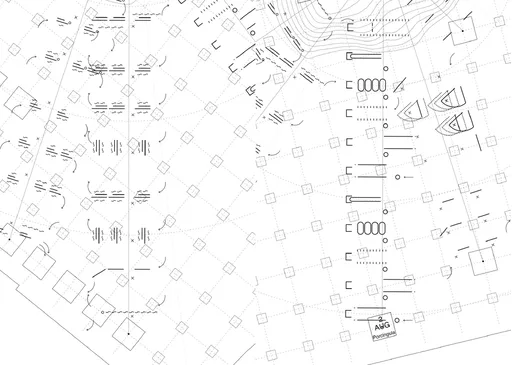
When Indigenous communities are asked to provide proof of their connection to ancestral lands, what Western legal forums accept as documentation does not truly represent or respect tribal culture and traditional formats of knowledge transfer.
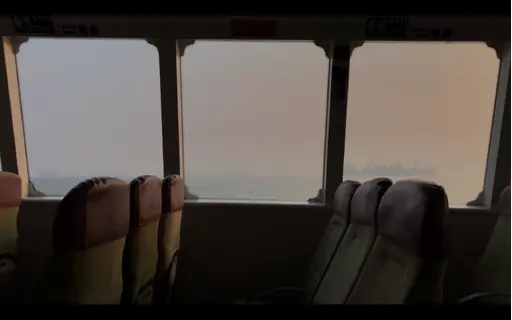
How do we reckon with our attachments to place, and their knotted historical relations? A meditation on maritime trade routes, SEA – SHIPPING – SUN (2021), is a short film directed by Tiffany Sia and Yuri Pattison shot over the span of 2 years to render a simulated duration of a day, from The film is set against a soundtrack of shipping forecasts from archival BBC Radio 4 broadcasts. The sun emerges and disappears, again and again.dawn until dusk.
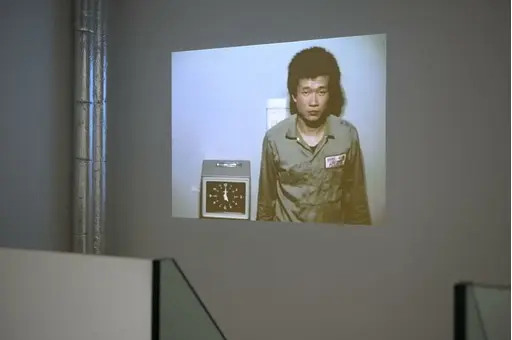
In this essay, Amelia Groom responds to Tehching Hsieh’s One Year Performance 1980–1981: Time Clock Piece (1980–1981), one of the works on view as part of the No Linear Fucking Time exhibition at BAK, basis voor actuele kunst, Utrecht. Through a reading of Dolly Parton’s contemporaneous antiwork anthem 9 to 5 (1980), Groom reflects on historical shifts in the ways that workers have been and continue to be exploited through techniques and technologies of time.

Grappling with the imposed linearity of timespace as a fundamental feature of colonial violence, this essay by Promona Sengupta (also known as Captian Pro of the interspecies intergalactic FLINTAQ+ crew of the Spaceship Beben) proposes a mode of time travel that is “untethered from colonial imaginations of the traversability of time and space.”

Weird Times (2021), is a 30-page chapbook by artists Tiffany Sia and Yuri Pattison on time-telling and hegemony. Featuring writing by Sia and images selected by Pattison, it is a brief history of the development of time-keeping technologies. The clock is disassembled as a political tool, a metronome of coercion and an accelerant of war power. Out of these mechanisms, resistant counter-tempos emerge.
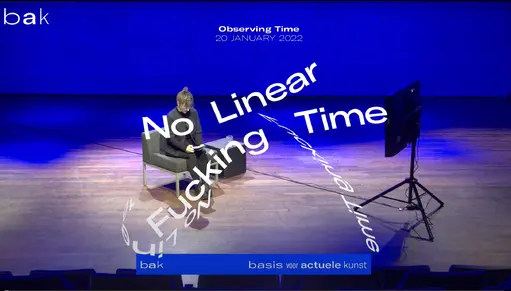
An online conversation with performance artist Tehching Hsieh, writer Amelia Groom, and writer and curator Adrian Heathfield, moderated by BAK curator of public practice Rachael Rakes on 20 January 2022. The conversation takes Hsieh’s work as a starting point in addressing performative time, labor time, gaps, and rhythms of endurance, among other things.
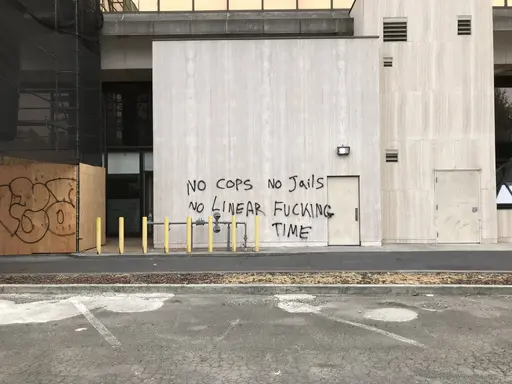
The “No Linear Fucking Time Bibliography” is an evolving resource which compiles selected scholarly and artistic texts relating to the various strands of study involved in this project.

In “Reclaiming Time: On Blackness and Landscape” (first published in PN Review 257 in 2021), poet Jason Allen-Paisant traces the racialized social contexts and modern environmental constructs that “disproportionately rob Black lives of the benefits of time.”

While walking through the “Nothing To Declare” arrivals gate at London Stansted Airport, Sam Keogh is confronted by three border guards: a pig, a unicorn, and a worried cartoon clock.

In this conversation with Walidah Imarisha (first published in Toward the Not Yet: Art as Public Practice, published by BAK and MIT Press, 2021), the writer and activist outlines her concept of “visionary fiction” as an imaginative practice to emancipate futures from the stronghold of linear time.
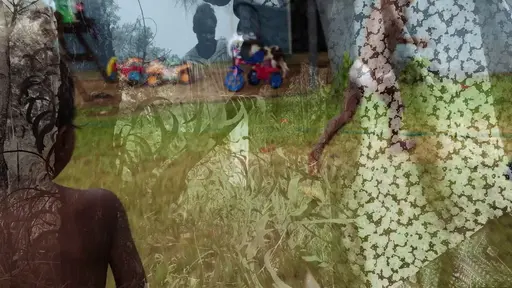
Drawing from her work as part of the Karrabing Film Collective, Elizabeth A. Povinelli’s essay “In Some Places the Not-Yet Has Long Been Already” (which first appeared in Toward the Not Yet: Art as Public Practice, published by BAK and MIT Press, 2021) contrasts the temporal orientation of late settler liberalism—which is troubled by the coming catastrophes of climate collapse—with the ancestral catastrophes of coloniality and enslavement, which are both past and present.

Designed by Rissa Hochberger, with additional design by JJJJJerome Ellis and Kelvin Ellis, the book The Clearing is the eighth title in Wendy’s Subway’s Document Series, an interdisciplinary publishing initiative highlighting the work of time-based artists in printed form.

In her text “Dearest Zen (Letters to Lichen),” artist and scientist Adriana Knouf presents future love letters written to lichens, symbiotic organisms of fungi and algae or cyanobacteria.

In “Immortals: On the Ancient Future Lives of Stone and Plastic,” Marianne Shaneen blends stories, histories, and ontologies of two substances: stone and plastic.
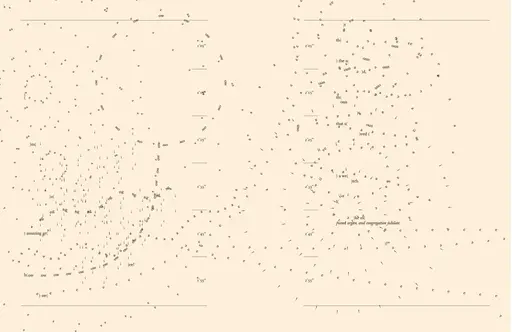
“The Clearing: Melismatic Palimpsest” is a part of musician and writer JJJJJerome Ellis’s multi-faceted project The Clearing (book published by Wendy’s Subway and album of the same name released by NNA Tapes, 2021). Conceiving of the forest and its clearings as “sites of resistant black oralities for centuries,” Ellis explores how stuttering, blackness, and music can figure within practices of refusal against the hegemonic governance of time, speech, and encounter.